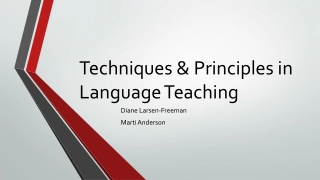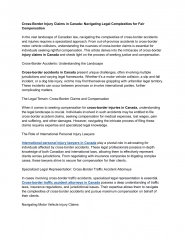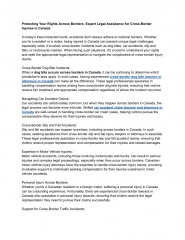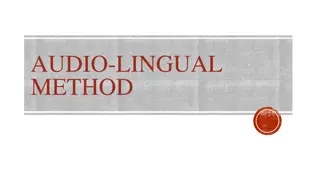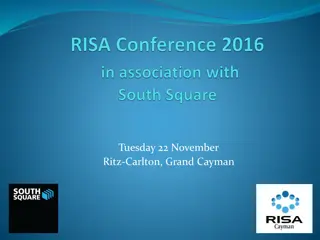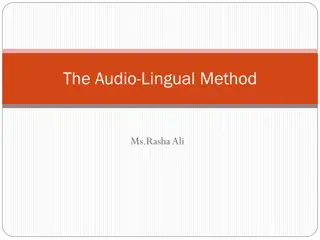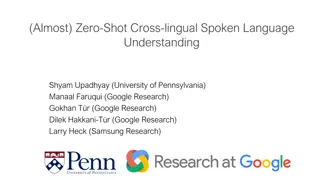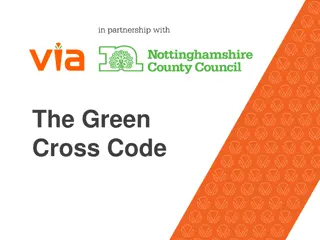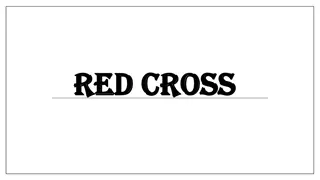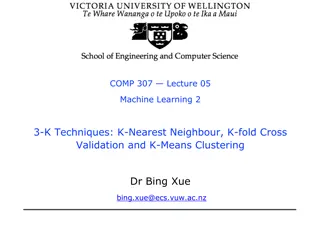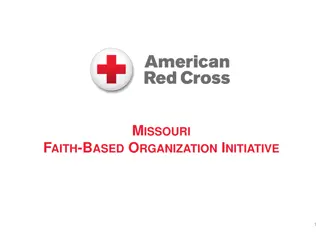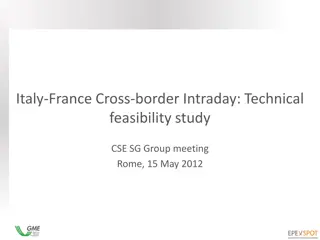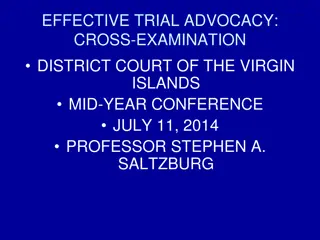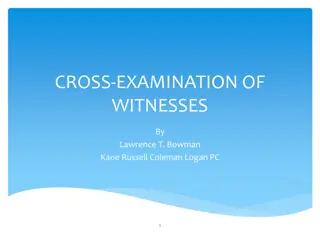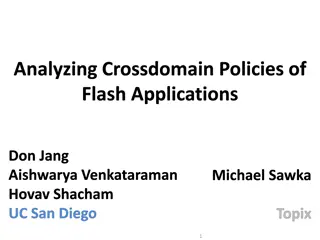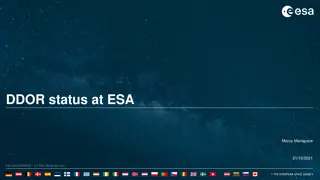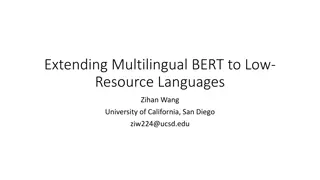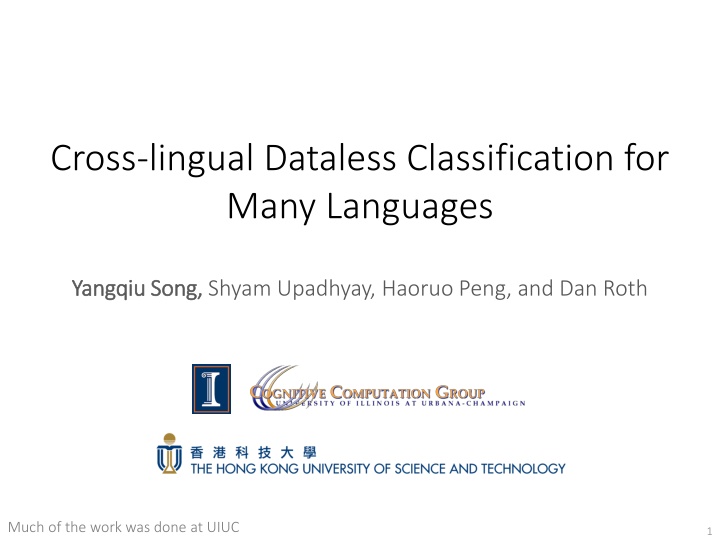
Dataless Classification Strategies in Multilingual Document Analysis
Explore innovative approaches in cross-lingual document categorization and classification without labeled data. Learn how to map documents across languages and generate semantic representations for effective dataless classification. Discover the importance of text representation and world knowledge in this cutting-edge research field.
Download Presentation

Please find below an Image/Link to download the presentation.
The content on the website is provided AS IS for your information and personal use only. It may not be sold, licensed, or shared on other websites without obtaining consent from the author. If you encounter any issues during the download, it is possible that the publisher has removed the file from their server.
You are allowed to download the files provided on this website for personal or commercial use, subject to the condition that they are used lawfully. All files are the property of their respective owners.
The content on the website is provided AS IS for your information and personal use only. It may not be sold, licensed, or shared on other websites without obtaining consent from the author.
E N D
Presentation Transcript
Cross-lingual Dataless Classification for Many Languages Yangqiu YangqiuSong, Song, Shyam Upadhyay, Haoruo Peng, and Dan Roth Much of the work was done at UIUC 1
Document Topical Classification On Feb. 8, Dong Nguyen announced that he would be removing his hit game Flappy Bird from both the iOS and Android app stores, saying that the success of the game is something he never wanted. Some fans of the game took it personally, replying that they would either kill Nguyen or kill themselves if he followed through with his decision. Pick a label: Class1 or Class2 ? Mobile Game or Sports? Labels carry a lot of information! But traditional approaches are not using it Models are trained with numbers or IDs as labels 2
Cross-lingual Document Categorization How to map a document in language L L to an English semantic categories, without training with task-specific labeled data. Potentially, given a single document (not a coherent collection) English ontology of Economy Economy - -Taxation Sports Sports - -Basketball 3
Categorization without Labeled Data [AAAI08, AAAI14, NAACL15] This is not an unsupervised learning not an unsupervised learning scenario. Unsupervised learning assumes a coherent collection of data points, and that similar labels are assigned to similar data points. It cannot work on a single document. Given: A single document (or: a collection of documents) A taxonomy of categories into which we want to classify the documents Dataless procedure: Let f(li) be the semantic representation of the labels Let f(d d) be the semantic representation of a document Select the most appropriate category: li* = argmini || f(li) - f(d d)|| Bootstrap Label the most confident documents; use this to train a model. Key Questions: How to generate a good Semantic Representations? How to do it in many languages, with minimal resources? 4
General Framework Mobile Game or Sports? Label names Map Compute document and label similarities labels/documents to the same space Documents Choose labels World knowledge World knowledge ( (Cross Cross- -lingual lingual) ) M. Chang, L. Ratinov, D. Roth, V. Srikumar: Importance of Semantic Representation: Dataless Classification. AAAI 08. Y. Song, D. Roth: On dataless hierarchical text classification. AAAI 14. Y. Song, D. Roth: Unsupervised Sparse Vector Densification for Short Text Similarity. HLT-NAACL 15. Y. Song, S. Upadhyay, H. Peng, D. Roth: Cross-lingual Dataless Classification for Many Languages. IJCAI 16. 5
Text Representation [Dense] Distributed Representations (Embeddings) New powerful implementations of good old ideas Learn a representation for a word as a function of words in its context The ideal representation is task specific. These ideas can be shows also in the context of more involved tasks such as Events and Relation Extraction Brown Clusters An HMM based approach Found a lot of applications in other NLP tasks No task specific supervision. Wikipedia is there. [Sparse] Explicit Semantic Analysis (ESA) A Wikipedia driven approach best for topical classification Represent a word as a (weighted) list of all Wikipedia titles it occurs in Gabrilovich & Markovitch 2009 Cross Cross- -lingual ESA: lingual ESA: Exploits the shared semantic space shared semantic space between two languages 6
Wikipedia Pages Across Languages Topical classification of documents in language L relies on: The availability of L-Wikipedia The existence of a title space mapping between L and English 292 languages have Wikipedia. We filter the title space to only include long, well linked pages that are linked to the English Wikipedia, yielding 179 languages. English Deutsch Spanish Hindi # Wikipedia Pages >15.8M 3,653,951 3,165,178 179,131 # Pruned pages: (Len>=100, link>=5) 3,090,649 1,482,675 914,927 33,298 # Pages linked to English Wikipedia 459,421 342,285 16,463 8
Percentage of Language Links to English 179 Wikipedia we can collect from Wikipedia dump 9
Cross-lingual Semantic SimilarityFor One Document Cross-lingual Explicit Semantic Analysis (CLESA) Hindi Document Hindi Wikipedia English Wikipedia Wikipedia Articles English Label Search Search Label: Sports Cosine Similarity cos[e(li), c c(h(d d))] Build inverted index of English and L-Wikipedia Search using English label and L-language document as queries Compute similarity based on the intersected Wikipedia titles Martin Potthast, Benno Stein, and Maik Anderka. A wikipedia-based multilingual retrieval model. In ECIR, pages 522 530, 2008. Philipp Sorg and Philipp Cimiano. Exploiting wikipedia for cross-lingual and multilingual information retrieval. Data and Knowledge Engineering, 74:26 45, 2012. 10
Bootstrapping with Unlabeled Data Initialize N documents for each label Pure similarity based classifications Train a classifier to label N more documents Continue to label more data until no unlabeled document exists Application of world knowledge of label meaning Domain adaptation Mobile games Sports 11
Experiments Two existing multilingual text categorization collections: TED: 13 languages; 15 labels; 1200 docs/label. RCV2: 13 languages; 4 labels (top level); 102 104 docs/label. 12
Better than 100 supervised docs/label Better than 100 supervised docs/label Not as good as 500 docs/label TED DATA TED DATA RCV DATA RCV DATA 0.6 0.9 0.8 0.5 0.7 0.4 0.6 0.5 0.3 0.4 0.2 0.3 0.2 0.1 0.1 0 0 English Averaged macro- F1 over 15 labels and 12 languages English Averaged micro- F1 over 4 labels and 13 languages Fully Supervised 100 labeled documents per label 100 labeled documents per label 150 labeled documents per label 200 labeled documents per label Dataless Karl Moritz Hermann and Phil Blunsom. Multilingual models for compositional distributed semantics. In ACL, pages 58 68, 2014. Dataless Dataless Tuned Dataless Bootstrapping Cross-lingual Embedding (TED) Cross-lingual Embedding (TED) Cross-lingual Embedding (Europarl) Cross-lingual Embedding (Europarl) 13
Experiments Two existing multilingual text categorization collections: TED: 13 languages; 15 labels; 1200 docs/label. RCV2: 13 languages; 4 labels (top level); 102 104 docs/label. To evaluate the coverage, we generate a new data set. 20 newsgroups. Take 100 documents that the English dataless classifies correctly Translate to 88 languages using Google Translate This gives us a multi-lingual collection for which we know the labels Evaluate the Cross-lingual dataless 14
88 Languages: Single Document Classification Dataless classification for English Accuracy Accuracy Hausa Hindi Size of shared English Size of shared English- -Language L title space Language L title space 15
Conclusions Document categorization without labeled data Semantic representation plays the key role Cross-lingual dataless classification Applied to many languages Cross-lingual ESA outperformed standard word embeddings Comparable supervised learning with 100-200 per-label Future work Low-resource languages Small presence of Wikipedia Thank You! 16
Translate 100 documents of 20-newsgroups back to English English ESA based dataless classification E. Gabrilovich and S. Markovitch. Wikipedia-based Semantic Interpretation for Natural Language Processing. J. of Art. Intell. Res. (JAIR). 2009. M. Chang, L. Ratinov, D. Roth, V. Srikumar: Importance of Semantic Representation: Dataless Classification. AAAI 08. Y. Song, D. Roth: On dataless hierarchical text classification. AAAI 14. 18
Cross-lingual Classification for 88 languages Hindi: 0.33/0.82 Hausa: 0.12/0.08 Single document classification without bootstrapping 19

